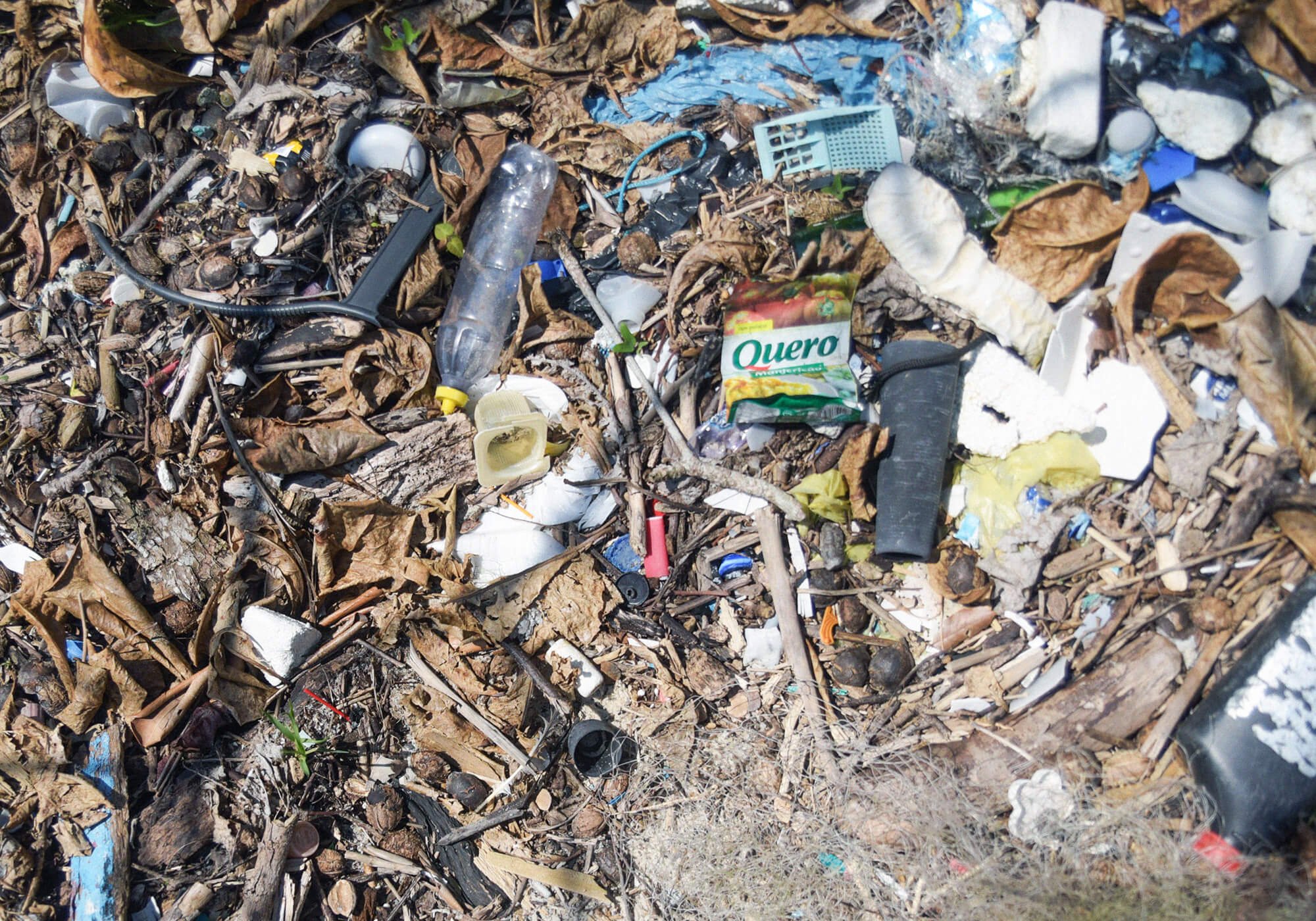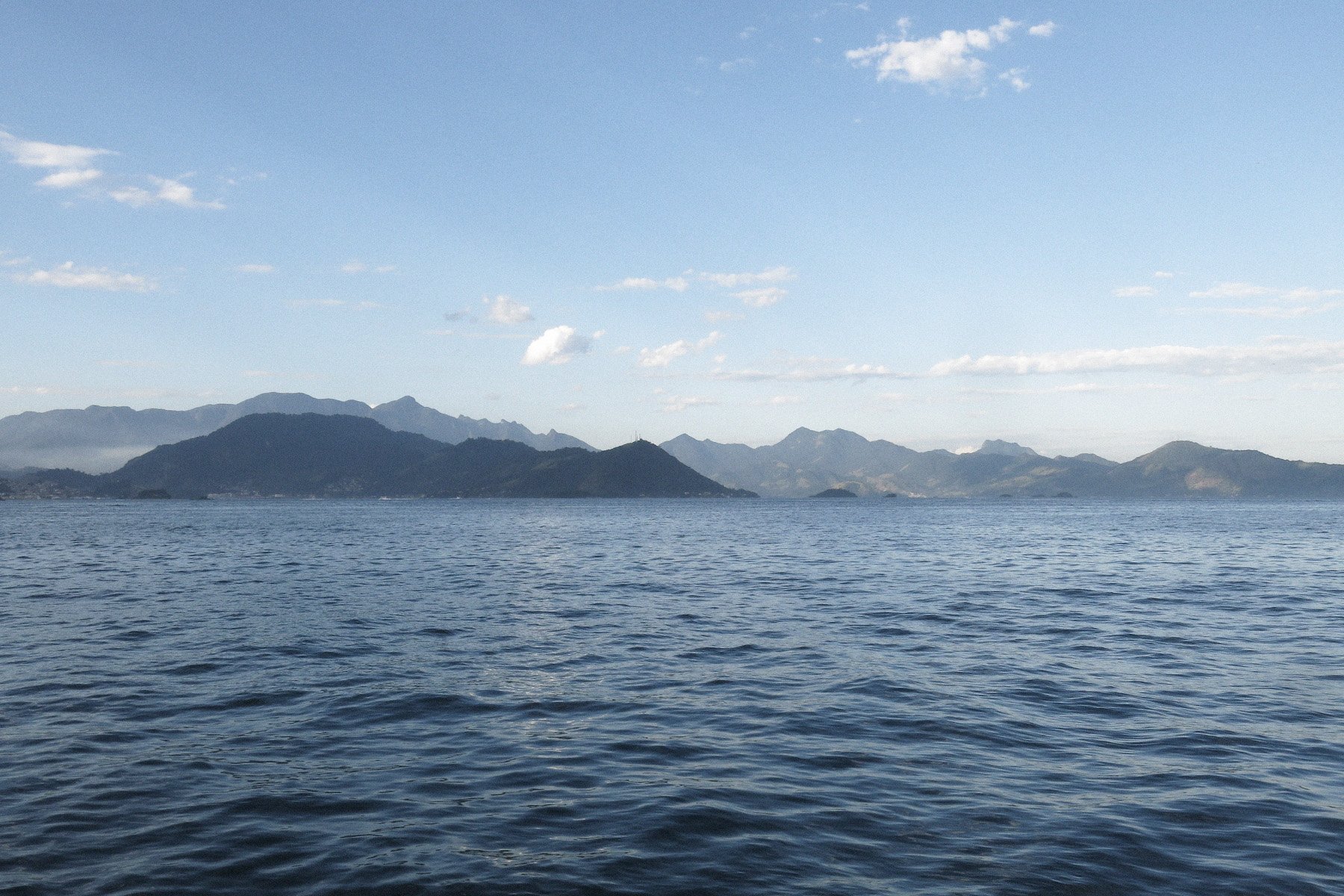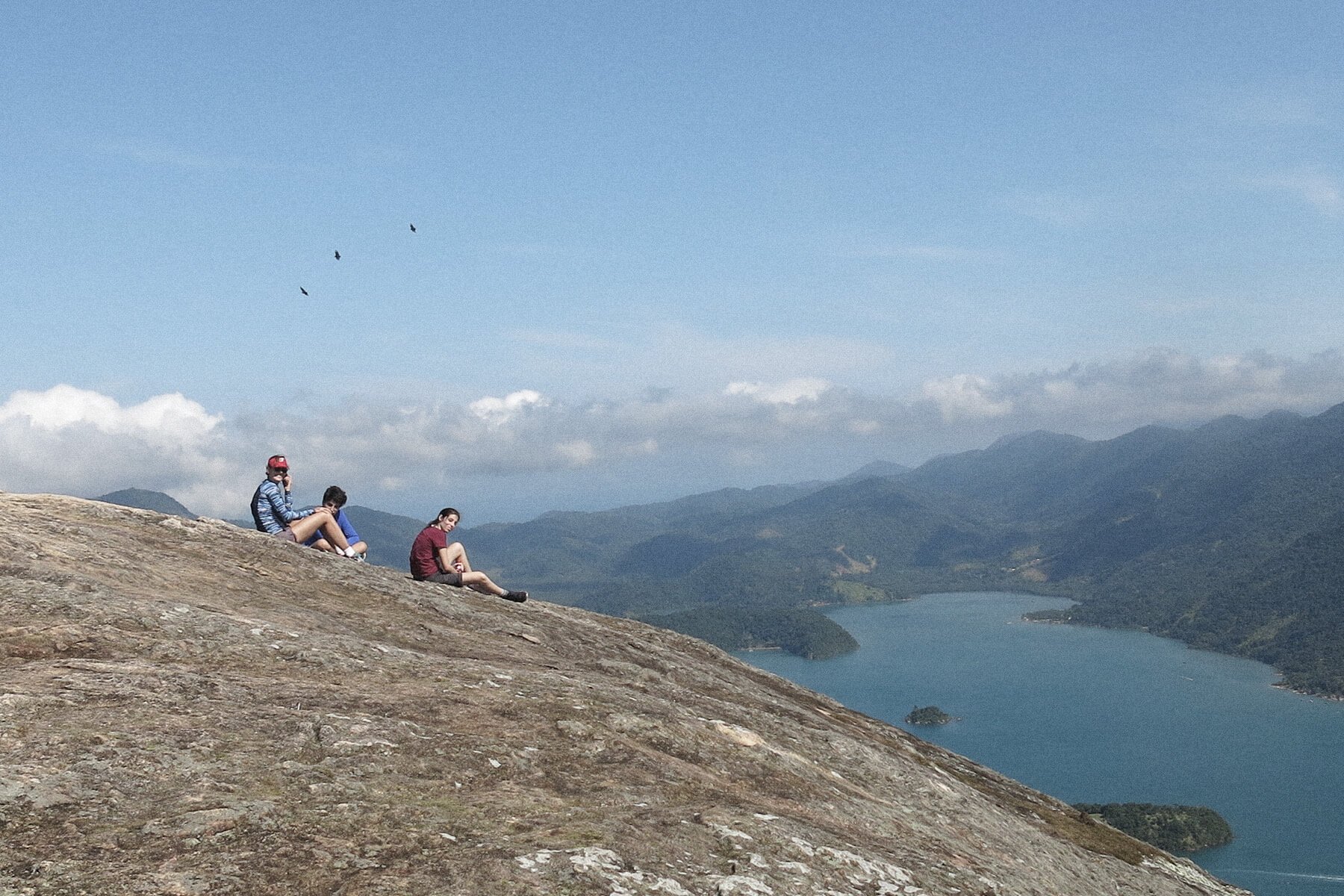Industry & Ecology in Brazil’s Ilha Grande
WE SPEAK TO LUIS SKINNER FROM THE ILHA GRANDE ECOMUSEUM, TO LEARN ABOUT THE EFFECTS NEARBY HARBORS, OIL RIGS AND NUCLEAR POWER PLANTS HAVE ON THE ISLAND’S ECOSYSTEM, AND HOW HE ONCE ADOPTED A POORLY PENGUIN FOR A WEEKEND.
Ilha Grande Ecomuseum Web Virtual View
WHAT'S SO SPECIAL ABOUT THE COSTA VERDE AND ILHA GRANDE?
I first visited Ilha Grande as a Boy Scout when I was seven, and my first impression was the contact between forest and high mountains – because for us in Brazil, 2000 meters is considered high. The rainforest grows all the way up on these mountains, and there is a lot of water; waterfalls, and rivers that go straight to the ocean. You can be in the ocean and just cross a small sandbar, and you are in the river with clean, fresh water. For me, it's amazing. And of course, foreign visitors love the tropical beaches, and the corals. The island also has an interesting history, which in a way tells the story of Brazil pre- and post-colonialism.
CAN THIS HISTORY BE SEEN IN THE ISLAND’S ECOLOGY?
Yes. Ilha Grande was once inhabited by the indigenous Tamoio people. After Portugal’s discovery of the New World, black Africans were brought to the island to work on sugarcane, orange and coffee plantations, and over the years there was a lot of mixing between the people. The economic activities of the island have also had an effect on its ecology: because of the plantations, closer to sea level we have secondary rainforest, but higher up is primary forest. After the plantations, the island was used as a penal colony for some time, and then after that, the main economic activity changed to fisheries. After independence from Portugal, these fisheries became Japanese factories, and there remains a large Japanese community on the island today – they have imprinted an interesting fusion in the cuisine, dishes with soy sauce and ginger for example. Now, these factories have been turned into pousadas and restaurants.
HOW HAVE MODERN INDUSTRIES AFFECTED ILHA GRANDE AND THE SURROUNDING ENVIRONMENT?
There are many. In the beginning the main threat to the marine environment came from sewage; many Brazilian cities directly discharge sewage into the ocean. Then we started looking into the impact of the nuclear power plant on the Costa Verde mainland, which can warm the waters nearby up to 36 degrees centigrade – the average water temperature around Ilha Grande should be 23 degrees. So, we started to study the decline in fish populations and fish species, not just as a result of the power plant, but, as we have a lot of harbors and shipyards on the mainland just across the strait from Ilha Grande, also from invasive species.
IT’S INTERESTING TO HEAR ABOUT THE RISING SEA TEMPERATURES, AS ILHA GRANDE HAS THIS UNIQUE CONVERGENCE OF TEMPERATE WATERS AND TROPICAL WATERS, WITH PENGUINS AND ANTARCTIC WHALES MINGLING WITH TROPICAL DOLPHINS AND CORALS. CAN YOU TELL ME MORE?
Ilha Grande is on the whales' migration route, as they leave the Antarctic to go to warmer waters like Bahia and the Abrolhos archipelago further north. It's normal to see humpback, Bryde’s and southern right whales on Ilha Grande – in fact, in the past, many of these fisheries were dealing with whale meat. Now, whale watching has become a popular tourist activity. Magellanic penguins arrive at Ilha Grande during winter storms from May to September. Sometimes I dive with them and spot sea lions at the same time – it’s amazing. Some years ago, my son and I collected a baby penguin from a beach on Ilha Grande and took it home. It was in a very bad condition, and we nursed it back to health.
“Some years ago, my son and I collected a baby penguin and took it home. It was in a very bad condition, and we nursed it back to health.”
WHAT WAS IT LIKE HAVING A PENGUIN AT HOME? WAS IT RUNNING AROUND THROUGH THE HOUSE MAKING A MESS? WAS IT NOISY?
Yes! It was very tired after the long journey, so we fed it fish and eggs, gave it a lot of water, and after a while it began to walk around. As it got healthier, it started to make a lot of noise. My son thought it was amazing to have a penguin at home!
DID YOU GIVE THE PENGUIN A NAME?
Ah no, we didn’t have time for that. We only kept him for a weekend before setting him back in the ocean again.
AS A SPECIALIST IN MARINE FOULING, WHAT OTHER THREATS TO THE ECOSYSTEM HAVE YOU DISCOVERED?
Around 20 years ago I started to count the amount of litter I would encounter in Ilha Grande, and Bananal Bay on the mainland. At the time, I didn’t realize we could measure that, but it gave us a powerful indicator of the contamination of the island, and this became very important for the local communities who depend on the marine ecosystem for their livelihoods. Also, as there are many offshore oil fields around the Costa Verde, we have found oil to wash up and contaminate the beaches of Ilha Grande. There has been some dispute between the scientific community and the oil industry as to whether Ilha Grande sits within the borders of the oil fields, but it’s clear that the currents bring waste from the oil rigs even if they are 100 kilometers away.
WHAT KIND OF MARINE LITTER DO YOU SEE?
It’s mostly plastic. On the Atlantic-facing side, it is mostly small pieces of plastic, some fishing litter, and sometimes litter from very distant places – I once found a plastic bottle from France that was produced 30 years ago. Inside the bay facing the mainland, due to tourist activities, we find a lot of cigarette butts and plastic bottles and food wrappers, so a very different composition but still mainly plastic.
“I once found a bottle from France that was produced 30 years ago.”
Luis Skinner
HOW ARE LOCAL COMMUNITIES AFFECTED BY THESE TWO THREATS, MARINE LITTER & INVASIVE SPECIES?
The marine litter is because we do not have a very good waste management system. So, locals sometimes clean the beaches but don’t know how to send it to the mainland. This makes the beaches less attractive, affecting those who rely on tourism. For fishermen, the marine litter collapses the nets, and all they are catching is trash. Invasive species compete with local species. For example, the sun coral can eat the larvae of fish the local communities rely on – Ilha Grande was the first place in Brazil sun corals were found, and they’ve since spread north along the coast. Invasive species can colonize nets and boats, causing them to drag, and increase their fuel consumption. So there’s a very direct economic impact for the local communities.
ARE THERE SOLUTIONS TO THESE PROBLEMS?
It's almost impossible to eradicate invasive species, so it’s more about how to deal with them – like cleaning of substrates for example – but it's very difficult. We leave information to managers on how they can avoid these impacts but it is difficult to convince them; often they are more interested in short-term returns. We work with the local communities in educating them about their environment, and how this biodiversity is part of their everyday life. We speak to fishermen about how their traditional knowledge of the waters is very important for marine conservation.
WHAT ARE YOU WORKING ON AT THE MOMENT?
Right now I’m very interested in studying the coral reefs and their resilience in the face of rising sea temperatures. If we find corals growing in the bay it means the seawater is still of a good quality, and it gives us an opportunity to highlight the bay's importance to the local community, the government, and the big industries around it.









